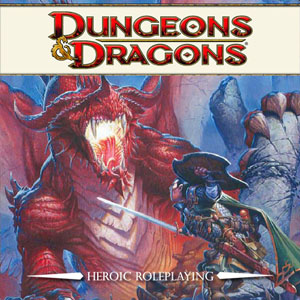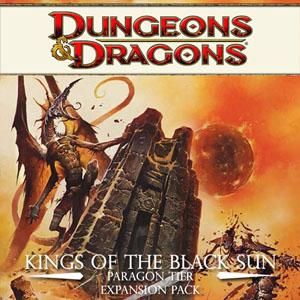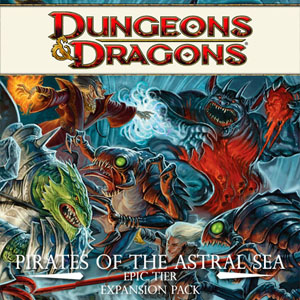I was recently reminded of the clusterfuck release of the D&D Essentials line. (Designed to reduce the cost of entry to the game while reducing confusion over what books you need to buy in order to play, it has increased both cost and confusion.)
If a genie put me in charge of Wizards of the Coast, this is what I would have released instead:



Three boxed sets, each containing:
- A rulebook with all the rules necessary for a complete tier of play.
- An adventure book with a complete adventure path designed to take you through the entire tier. (Preferably using node-based or hexcrawl-inspired design. This would probably necessitate abandoning or modifying the delve format to make this work with a reasonable page count.)
- A set of dice and a solo adventure pamphlet in the Heroic Tier box.
- Whatever other goodies (character sheets, tokens, power cards, miniatures, handouts) I can get away with and still hit a price point somewhere in the $30-50 range.
I would release these boxes on a 6 month schedule. 18-24 months after the core set went on sale, I would release a new “Heroic Adventure Pack” which would contain everything in the core set but with a different adventure path. 6 months after that, a new paragon tier expansion would be released (with a new adventure path but the same rulebook).
Depending on sales performance, I might phase the old versions of the products out. But the goal would be to have:
- A single, consistent box that says “DUNGEONS & DRAGONS” on the front cover.
- All other products are clearly labeled “EXPANSION PACK”, making it clear which product you need to buy to start playing. (The one-and-only product that doesn’t say “Expansion” on it.)
- To have “all the rules” you just need to pick up any combination of HEROIC-PARAGON-EPIC.
The idea is to time your product release schedule to encourage people to play through a complete 1-30 campaign and then restart a new 1-30 campaign when the next sets starts cycling through.
And, yes, the scheme is specifically designed so that people end up with multiple copies of the exact same rulebooks. I would make it a point to not even change the cover art on them. I want you to think of them as duplicates, because that increases the likelihood that you’ll loan them to your friends or even give them away.
This sequence of box sets is the core of your game line. Everything else supports them as advanced options. For example, the Heroes of the Blank Blank line could offer new character class options (possibly tied back into the current sequence of boxed sets).
Dungeon’s DDI would be used to offer an alternative track of play: Each month should contain an adventure path scenario, a heroic tier scenario, a paragon tier scenario, and an epic tier scenario. Over the course of any 18 month stretch, you’d be offering 2-3 full tracks of 1-30 play (boxed sets, Dungeon adventure path, and plug-and-play Dungeon content).












Sounds like a nifty idea – with two problems:
1. Some might critizes those multiple core rule problems, but I guess it’s a nice idea for all group members to buy their own rules set.
2. This idea is far too cheap. WotC wants to earn money! That’s why the Essentials line is so bloated and trying to get you to buy the full product.
So sadly, your idea makes too much sense for WotC…
This is awesome. Please win a lottery and purchase D&D immediately!
I like the evocative titles of the expansions.
98
I think this Mentzer style Heroic Set-Paragon Set-Epic Set approach is a reasonable approach, and beats the mess that is Essentials.
I think though that the core issue for WotC is building a new player base, and that only requires that they sell a box with everything needed to play a satisfying game of several months’ weekly play.
That *could* just about be an Heroic Tier box with player’s book, GM’s book and adventure – something like Mentzer Basic inc Keep on the Borderlands or Mentzer Expert inc Isle of Dread. A somewhat sandboxy adventure is better as you get much more play time per page; WoTC’s 10-level adventures (eg H1-H3) run for nearly 300 pages! That’s not going to be practical at a decent price point. Maybe a 3-level adventure with suggestions for continuing the campaign could work.
However I think the most practical approach is what Paizo are doing with their upcoming 5-level Basic Set; that’s around 17 4-hour gaming sessions, which should be plenty enough to get anyone hooked. And including suitable 1-5 adventure material is a lot more practical than 1-10; it can be done in ca 64 pages if you use a sandbox/nodal approach, possibly with up to 3 detailed 2-page ‘Delve’ format highlight encounters per level, 5x3x2=30 pages, no more than half the adventure.
BTW I disagree with your view that anything you ever ‘put away’ is a valueless pay to preview. A 5-level box set I can take on vacation or to the Meetup when I run low-level games is not valueless, even if the content is reproduced in some 20-level or 30-level hardbacks. And 5 levels might be all I ever need.
I’m not necessarily convinced that it’s impossible to produce a 1st to 5th product that isn’t pay-to-preview when you’ve got a 1st to 20th product. I was hopeful that the Essentials Starter Set would be that product (it wasn’t). I’ll be interested in seeing whether or not Paizo manages to avoid that trap.
I think the biggest problem with pay-to-preview products is that they AREN’T effective at building a new player base. New players fall into three categories:
(1) Those joining an existing group, in which case they’re probably going to want the same rulebooks everyone else at the table is using. (Which won’t be your pay-to-preview product.)
(2) Those who buy your pay-to-preview Starter Set, either because they saw it without knowing there was an alternative or decided it was the right product to buy because that’s what you (as the publishing company) are telling them. (A significant number of these customers will end up pissed off that they bought the wrong thing.)
(3) Those who do the research, realize that you’re trying to sell them a pay-to-preview product, and instead buy the full product.
More generally, I would point that:
(a) No other entertainment industry on the face of the planet tries to sell their products like this.
(b) Products like this have never succeeded in the RPG industry, either.
I like your commentary on D&D 4e. You have a lot of interesting ideas and thoughts. Please continue to post about 4e. The folks at WotC are now starting to backpedal on “balance-at-all-costs” approach to RPG design. I think you provide interesting commentary on why that is a good idea.
There’s still one little nitpick about your model, and that is that I, personally, would number the expansions – after all, not everyone who enters that store looking for “that box that will let us keep on playing our game” will know that “paragon” is what comes after “heroic”.
Actually, I wouldn’t make those expansions, either – I would have a basic box set, and then one single expansion book covering the rest of the game. Have 3 booklets in the basic set – a basic character creation and advancement booklet, an adventure booklet with GMing advice, and a booklet containing all the core rules. I would then release a hardback containing all the stuff in the character booklet in the hardback, but nothing from the other 2. I would also offer the rules booklet separately, for those who want that, but the price tag would be high enough that choosing that option above the starter set wouldn’t be a no-brainer.
Perhaps explicitly label the character booklet as a “Free preview” or something, or maybe have some character options in it that aren’t reprinted in the hardback (nothing huge, but something nevertheless – a couple spells or feats, maybe some other minor things. Printed on the last page, so people don’t have to go looking through the entire thing every time they use it), so that people don’t feel ripped off for having paid for it (because, hey! It says “Free” – you didn’t actually pay for it!/it contains stuff you wouldn’t get otherwise!).
This way, out of the stuff you get in the basic set, only 1 booklet would be rendered obsolete, out of 3, and you’d keep referring to one of them as long as you played the game.
I’d also make sure to separate the rules booklet into basic and advanced rules, and make the basic rules as short as possible – “This is what you need to know to play. The rest of this book, you don’t have to read yet – if a situation comes up where you need them, you may refer to the index”.
One thing you didn’t mention is that this is very close the the MtG model:
Cards for the next edition are defined and the boxed set is released.
Expansions until the next edition are defined.
Tournaments are the current edition plus a set number of the most recent expansions.
I also like the “extra rules books they can give away” attitude.
Finally, the DIY guidelines books and such become more evergreen sidelines as players finish their first trip through the tiers and want to write their own.
Finally, with 5e this is a great way to appeal to all with those sideline books adding personalities to make it more like 3/4 or OD&D/BX/BECMI while the core is closer to AD&D1/2.